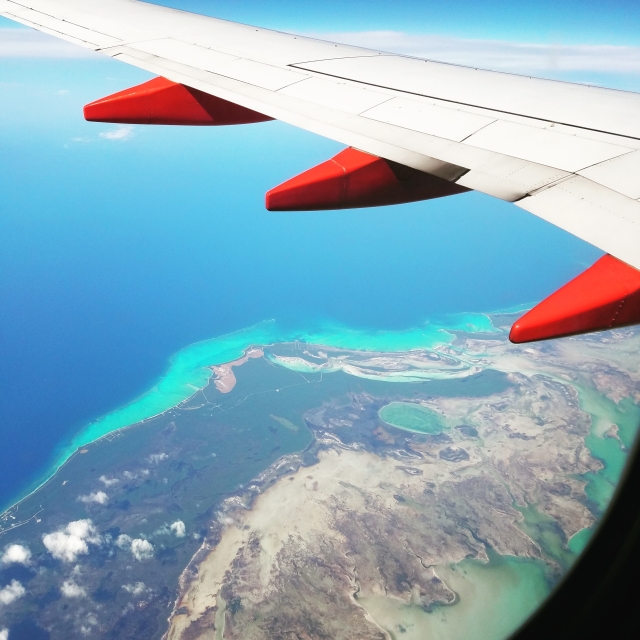The Conclusion of a Research Experience in Puerto Rico
Submitted by Eloise Flora Yount on
Hello again, CienciaPR readers.
If you read my last blog, you know that I’ve been in Mayaguez, PR for the summer doing research in the RMSM REU (Reconfigurable and Multifunctional Soft Materials Research Experience for Undergraduates) program at the University of Puerto. It’s been a wonderful summer, and I’m sad that the time is almost here to leave this “island of enchantment”.
As I mentioned before in my previous post, the research I have been conducting focuses on a material called CPL-bpp, a class of coordination pillar ligand belonging to a broader class of materials known as metal-organic frameworks. The goal has been to find out exactly what happens to this material at the molecular level when it starts to soak up carbon dioxide. Additionally, finding out how these molecular-level changes impact the “long-range” or macroscopic textural properties of the material is extremely important in applying the findings to developing new technologies for CO2 capture—technologies that could be used to alleviate global warming, or that could be used to design capture and recycle systems in manned spacecraft intended for missions to mars!
Before we began our computational work, experimental work had been done with this material to measure the amount of carbon dioxide loaded or “adsorbed” in the material under varying pressures of CO2. We have been working to create a model for simulation that exhibits the same CO2 adsorption as the experimental material. Our hypothesis was that the presence of CO2 in the framework structurally changes it, and that with each addition of a CO2 molecule, the changes become even greater. Therefore, incorporation of CO2 and structural changes associated with it could make the material more conducive to CO2 capture. Basically, we think that adsorbing a little CO2 makes the material more likely to adsorb even more CO2. We have reason to believe this because of the shape of the experimental adsorption curve, and because the ligand in the material (the bpp part) is long and flexible, which could give the material this dynamic behavior.
Both in experimentation and in simulation of this process, you have to start with the “as-synthesized” version of the material. This simply means that instead of void space in the pores, water or some other solvent used in synthesis is present. To make the material ready for adsorbing CO2, you have to “activate” it, or remove these solvent molecules from the pores first. In experimentation, this entails heating the material up and applying vacuum. Our initial plan was to simulate the activation process, and then start adding molecules of CO2 to this activated structure. Then, we planned to analyze how each addition changed the structure, and how closely the adsorption curves for these structures with incorporated CO2 matched the experimental adsorption curve. Our initial activation simulations did not go as planned--the results from this process showed that the material actually “collapsed” or lost nearly all of its porosity in the process. We know that this simulation is not correct, because in physical experimentation, the material adsorbed a good deal of CO2. So now, we have to take a step back and find a better way to model the activation process.
This sounds pretty disconcerting. However, as with any kind of research, set-backs and second-tries are always a part of the process. We still have the same goal and the same game plan. Additionally, some promising results were also found based off of this preliminary “collapsed” structure: adding CO2 molecules to it did in fact increase the void fraction within the material. This suggests that even though we don’t have the correct model for the activated structure, we have the right idea when it comes to adding CO2 and observing changes that make the material more conducive to adsorbing it. Once we elucidate a correctly activated structure, we know exactly where to go from there to be on our way to designing a material that selectively adsorbs CO2. So as my grandpa always said, “Onward and upward!”









